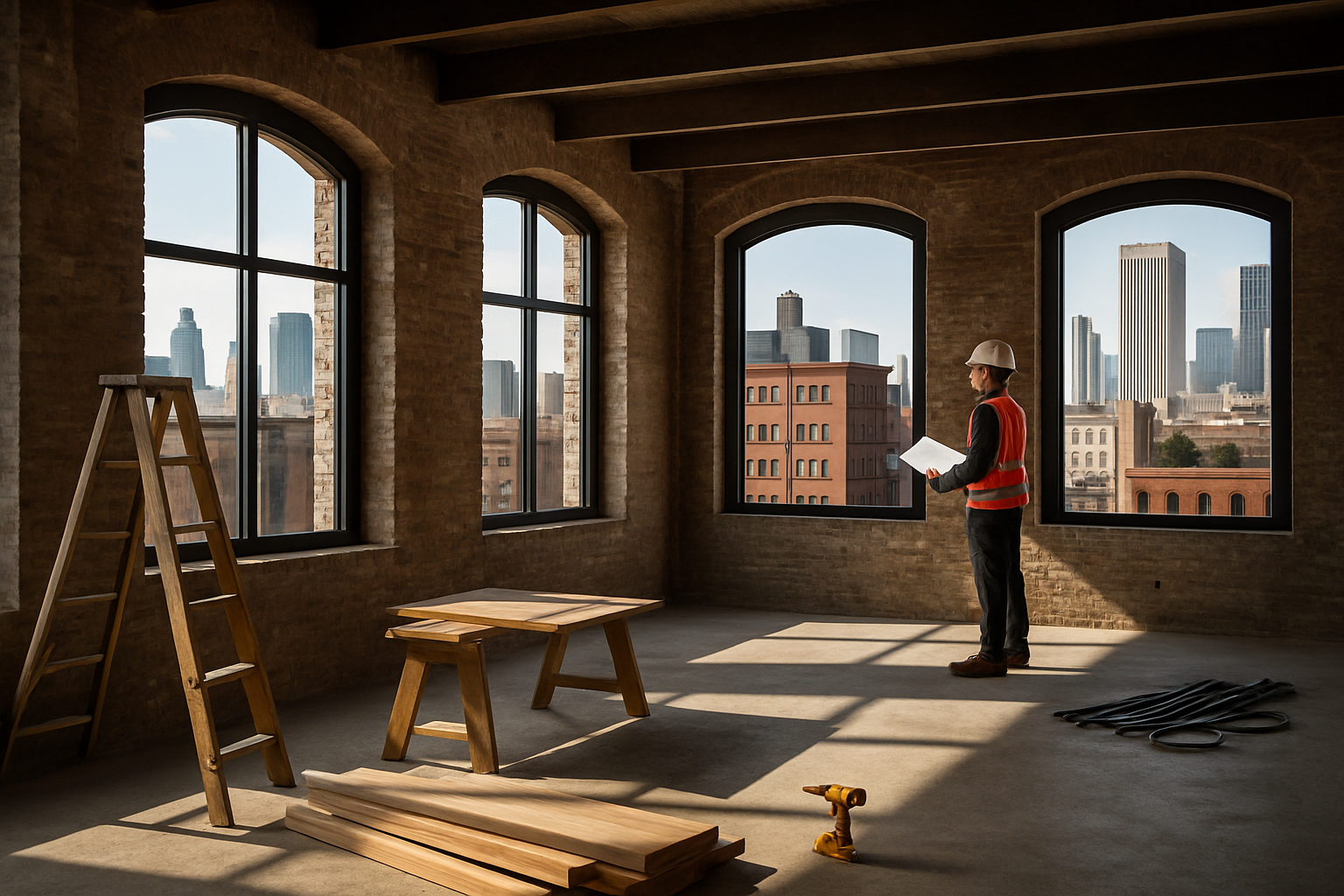Unlocking Value in Forgotten Urban Spaces: Adaptive Reuse in Real Estate
The urban landscape is ever-changing, with cities constantly evolving to meet the needs of their inhabitants. Yet, amid this flux, numerous structures stand abandoned, their potential untapped. Enter the concept of adaptive reuse – a innovative approach in real estate that breathes new life into forgotten spaces. This strategy not only revitalizes neighborhoods but also presents unique investment opportunities for savvy real estate professionals.

The Historical Context of Adaptive Reuse
The practice of repurposing buildings is not new. Throughout history, structures have been adapted to suit changing needs. Ancient Roman temples were converted into Christian churches, medieval castles were transformed into museums, and Victorian-era mansions became offices. However, the modern concept of adaptive reuse as a deliberate real estate strategy emerged in the mid-20th century.
In the 1960s and 1970s, as urban renewal projects swept across many cities, preservationists began to advocate for the retention and reuse of historic buildings. This movement gained momentum in the 1980s and 1990s, coinciding with a growing interest in urban living and a recognition of the environmental benefits of reusing existing structures.
The Economic Advantages of Adaptive Reuse
From a financial perspective, adaptive reuse projects can offer significant advantages. While the initial costs may sometimes be higher than new construction, developers often benefit from tax incentives, particularly for projects involving historic buildings. Additionally, the unique character of repurposed spaces can command premium rents or sales prices.
Recent market trends indicate a growing demand for distinctive spaces with character and history. A 2022 study by the National Association of Realtors found that properties in historic districts often appreciate faster than the overall market, with adaptive reuse projects contributing to this trend. Moreover, these projects typically have shorter development timelines compared to new construction, allowing investors to see returns more quickly.
Challenges and Considerations in Adaptive Reuse
While adaptive reuse offers numerous benefits, it also presents unique challenges. One of the primary hurdles is navigating zoning regulations and building codes, which may not easily accommodate the transition from one use to another. Developers often need to work closely with local authorities to obtain necessary permits and variances.
Another significant consideration is the condition of the existing structure. Old buildings may require extensive renovations to meet modern safety standards and energy efficiency requirements. Unforeseen issues such as asbestos, lead paint, or structural problems can add complexity and cost to projects.
Despite these challenges, many developers find that the benefits outweigh the drawbacks. The key lies in careful planning, thorough due diligence, and creative problem-solving. Successful adaptive reuse projects often involve multidisciplinary teams including architects, engineers, preservationists, and real estate professionals.
Market Impact and Investment Potential
The rise of adaptive reuse is having a profound impact on real estate markets, particularly in urban areas. These projects are often catalysts for neighborhood revitalization, attracting new residents, businesses, and investment. A 2023 report by the Urban Land Institute highlighted several case studies where adaptive reuse projects led to significant increases in property values and economic activity in surrounding areas.
For investors, adaptive reuse presents unique opportunities. These projects often offer higher potential returns compared to traditional developments, albeit with higher risk. The key is identifying properties with strong potential for repurposing and understanding the local market dynamics.
Certain property types have emerged as particularly suitable for adaptive reuse. Old industrial buildings, with their high ceilings and open floor plans, are often converted into trendy loft apartments or creative office spaces. Former schools and hospitals, with their robust construction and central locations, have been successfully transformed into mixed-use developments. Even obsolete retail spaces, such as struggling malls, are being reimagined as everything from residential communities to healthcare facilities.
The Future of Adaptive Reuse in Real Estate
As cities continue to evolve and sustainability becomes increasingly important, adaptive reuse is poised to play an even larger role in the real estate industry. Emerging trends suggest that the concept will expand beyond traditional historic preservation to include more recent structures that have become obsolete due to changing economic or technological factors.
The COVID-19 pandemic has accelerated this trend, with many office buildings and retail spaces sitting vacant. Forward-thinking developers are already exploring ways to repurpose these spaces for new uses, such as converting offices into residential units or transforming empty storefronts into last-mile delivery hubs.
Technology is also set to play a crucial role in the future of adaptive reuse. Advanced modeling and design tools are making it easier to visualize and plan complex renovations. Meanwhile, innovative construction techniques and materials are helping to overcome some of the technical challenges associated with repurposing old structures.
In conclusion, adaptive reuse represents a compelling opportunity in the real estate sector. It offers a way to preserve architectural heritage, promote sustainable development, and create unique spaces that resonate with modern users. For real estate professionals willing to think creatively and navigate the complexities involved, adaptive reuse projects can yield significant rewards both financially and in terms of community impact. As we look to the future of our cities, it’s clear that reimagining and repurposing our existing built environment will be crucial in creating vibrant, sustainable urban spaces.





